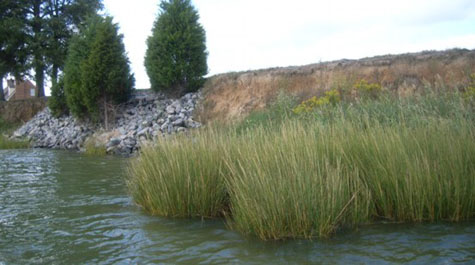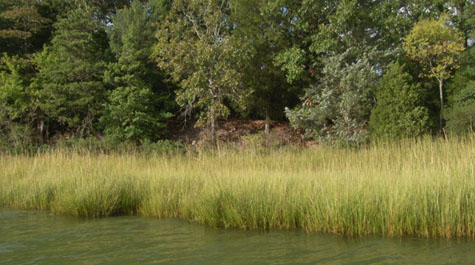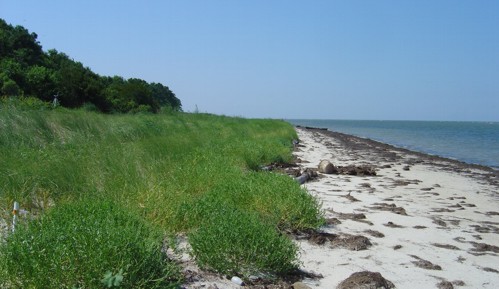Shoreline Management
Social, economic, and environmental pressures are increasing in coastal areas along Chesapeake Bay and Virginia’s southeast ocean coast. People enjoy living by and visiting the coast such that the pressure for more housing and coastal-based services is increasing. This sort of development places stress on natural coastal habitats that are vital to Chesapeake Bay.
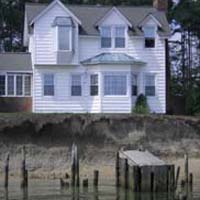 With approximately 85% of the Bay's shoreline privately owned, a critical need exists to increase awareness of erosion potential and the choices available for shore stabilization that maintains habitats at the land-water boundary.
With approximately 85% of the Bay's shoreline privately owned, a critical need exists to increase awareness of erosion potential and the choices available for shore stabilization that maintains habitats at the land-water boundary.
What is Shoreline Management?
Shoreline Management is the act of dealing – in a planned way – with actual and potential coastal erosion and its relation to planned or existing development activities on the coast.
Through its Shoreline Management Plans , Shoreline Protection Plans, and applied research, The Shoreline Studies Program at the Virginia Insitute of Marine Science, provides information and recommendations to localities and landowners that increases awareness of the choices available for erosion control and shore stabilization. SSP researches the Geology, Wave Climate, Sea-Level Rise, and Shoreline Erosion Conditions affecting a site in order to make site-specific recommendations.
The Coastal Profile
The goal of shoreline stabilization is to develop a coastal profile that protects the upland structures and provides critical Bay habitats. Defensive structures, such as revetments or bulkheads, protect property but generally do not provide the environmental edge at the land/water boundary that enhances water quality and supports the animals of the Bay.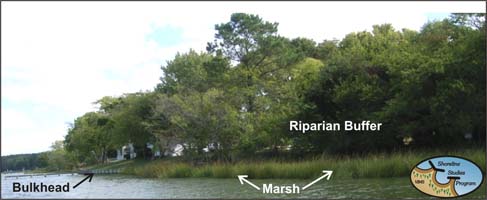
In high energy areas, a wide beach with a dune or vegetated backshore and gently sloping upland bank provides natural protection from storm surge and waves. In low energy areas, a wide marsh protects the base of the upland bank from erosion.
As the beaches and marshes become more narrow or non-existent through erosion, the upland is no longer protected from storm surge and waves. In inhabited areas, this usually results in the landowner taking steps to protect their property and stabilize the shoreline.


